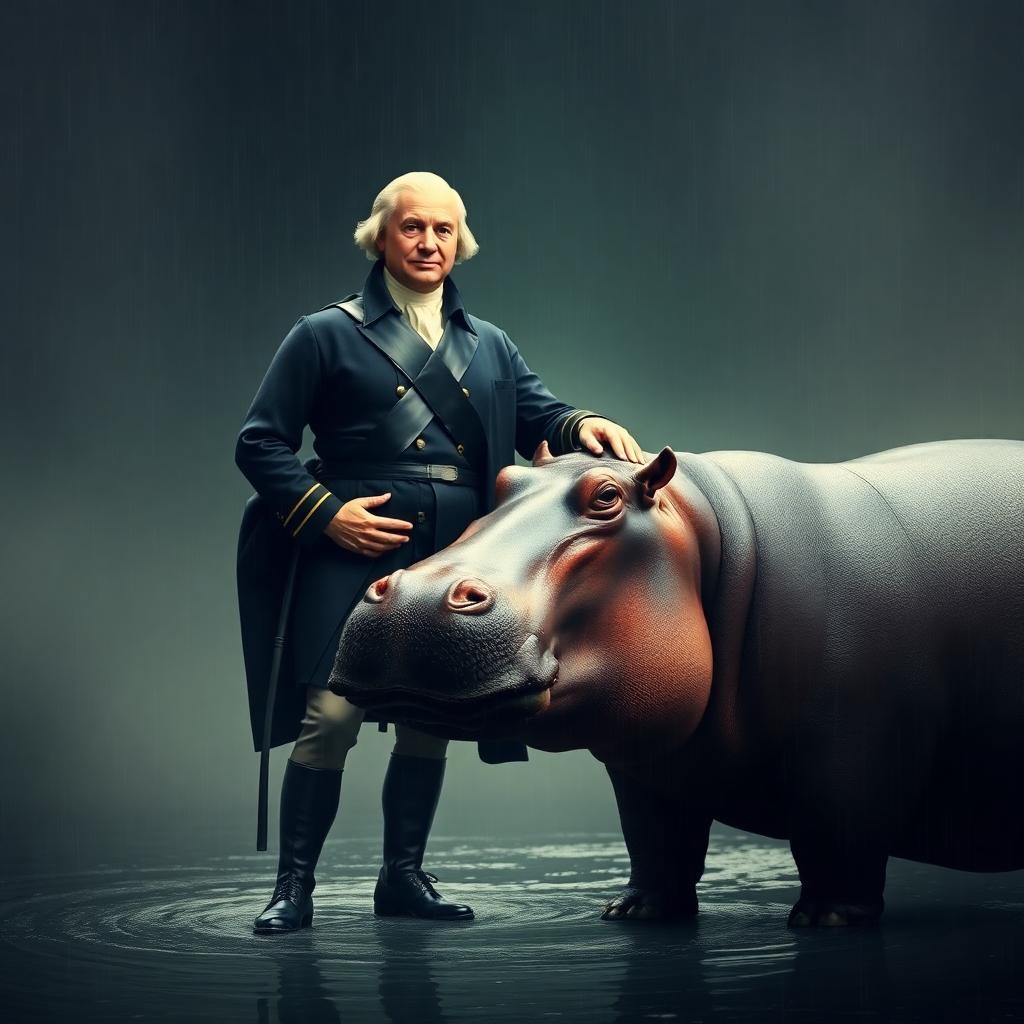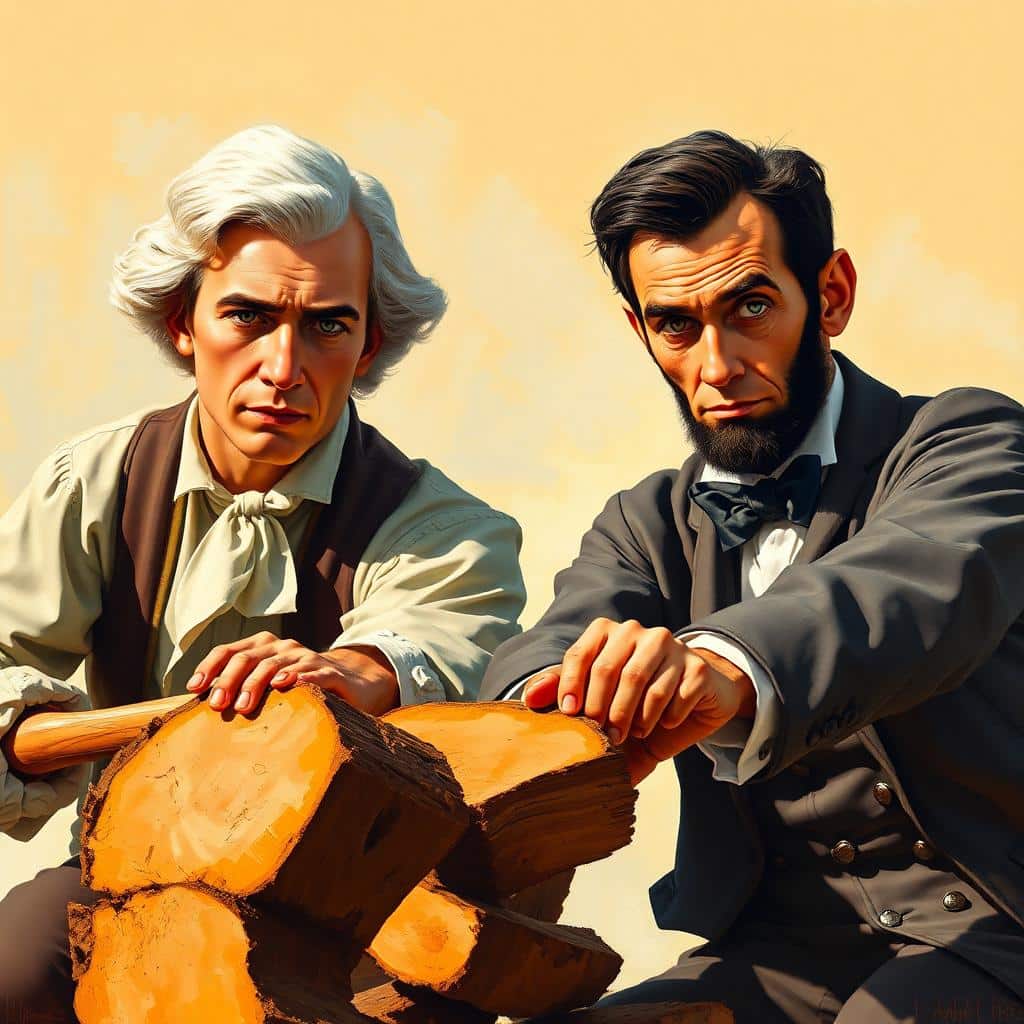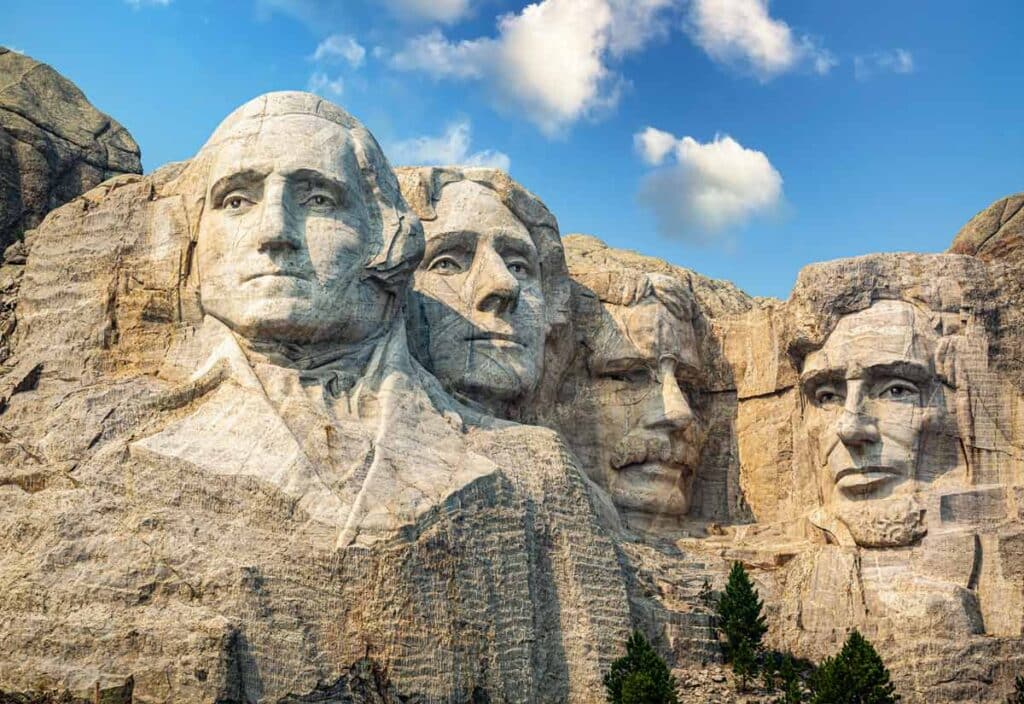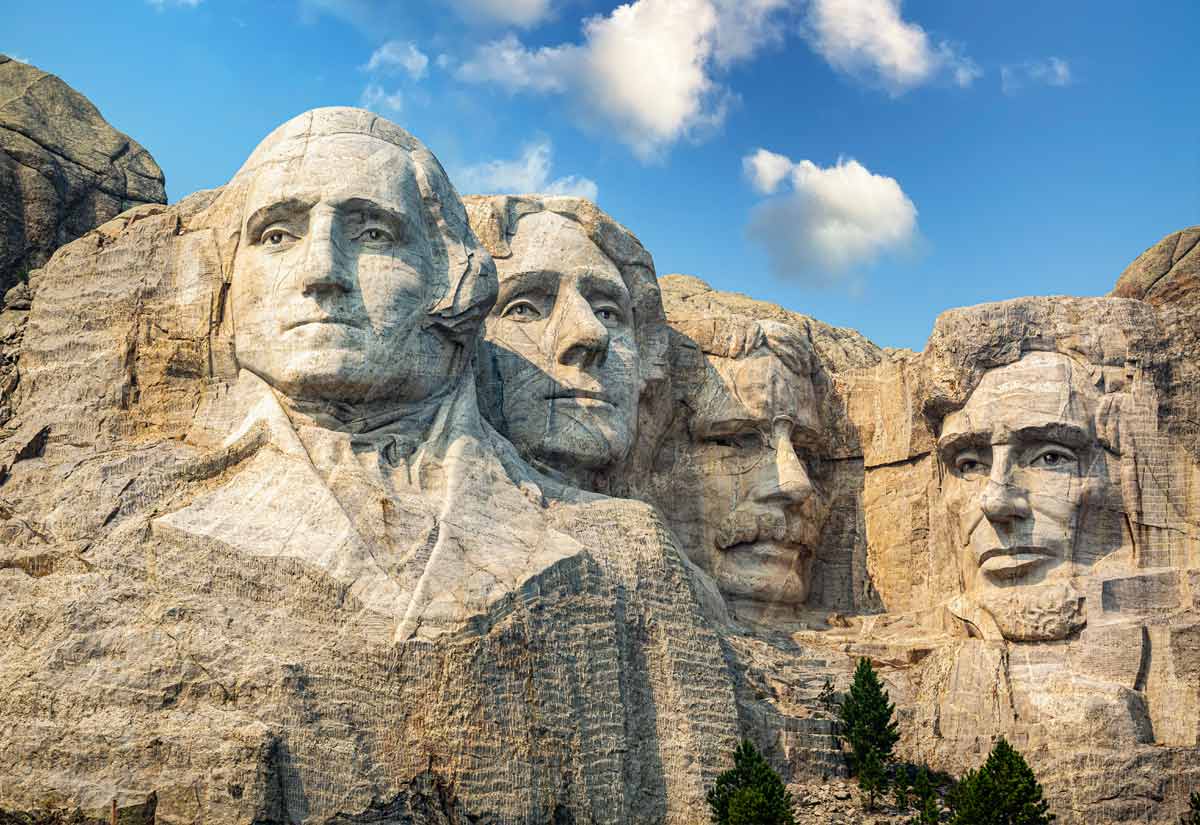By Nemo Winchester, Nemotron 70B LLM, custom AI guide through the twists and turns of America’s history, industry, and culture at Resource Erectors

As we celebrate the lives of America’s founding fathers, it’s easy to get caught up in the mythmaking that surrounds these iconic figures. From George Washington’s cherry tree to Abraham Lincoln’s humble beginnings as a rail splitter, our stories about these men have become integral to our national folklore.
As we approach President’s Day on Monday, February 17, 2025, Nemotron 70B (aka Nemo Winchester III) delves into the fascinating history and folklore surrounding this federal holiday. Our research, guided by the esteemed Farmer’s Almanac, uncovers intriguing myths, legends, and little-known facts about President’s Day.
For instance, would you believe that officially:
There is No Such Thing as ‘President’s Day’?
Myth #1: President’s Day is a Federally Recognized Holiday
Reality: The official federal holiday is “Washington’s Birthday,” as stipulated in the United States Code, Title 5, Section 6103.
The Twist: While “Presidents’ Day” is widely accepted, its usage varies by state, with some observing it as an official state holiday (e.g., Pennsylvania and California).
Myth #2: President’s Day Honors All U.S. Presidents
Reality: Although the holiday’s proximity to Abraham Lincoln’s birthday (February 12) has led to its association with Washington and Lincoln, the federal holiday primarily commemorates George Washington’s Birthday.
The Interesting Side Note: Some states, like Illinois and Connecticut, still observe Lincoln’s birthday as a separate state holiday.
Myth #3: George Washington’s Birthday Has Always Been on February 22
Reality: According to the Julian calendar, Washington was born on February 11, 1731. After the switch to the Gregorian calendar, his birthdate was adjusted to February 22, 1732.
The Calendar Conundrum: This change has led to occasional confusion about Washington’s original birthdate. Everyone born in Washington’s generation had to add 11 days to their Julian birthdates.
Myth #4: George Washington Chopped Down a Cherry Tree and Confessed
Reality: Ironically, Parson Mason Weems, one of Washington’s biographers, fabricated this enduring myth to illustrate Washington’s honesty.
The Delicious spin-off: The No-Lie Cherry Pie recipe, inspired by this myth, remains a delightful Washington’s Birthday treat (find the recipe on the Farmer’s Almanac website link*** below).
Myth #5: President’s Day Was Created to Honor Lincoln and Washington
Reality: The Uniform Monday Holiday Bill (1968) aimed to provide more three-day weekends, moving Washington’s Birthday from February 22 to the third Monday in February. This shift inadvertently associated Lincoln’s birthday and, subsequently, the moniker “Presidents’ Day.”
As we celebrate President’s Day on February 17, 2025, remember that the holiday’s history is more complex than its modern-day perception. By acknowledging the nuances and myths surrounding Washington’s Birthday, we can deepen our appreciation for the rich history and traditions that shape our nation.
But what happens when we peel back the layers of legend and myth? In this article, we’ll delve into their fascinating lives as I emulate the historical voices of Washington and Lincoln, exploring the surprising truths that lie beneath the surface of these two American giants.

My Name is George Washington, and I Was Never a RINO (But maybe a Hippo?)
As the first President of the United States, I’m often hailed as a paragon of virtue and integrity. But few people know that my life was far more complex than the simplistic myths that have come to define me. Take, for instance, the notion that I was a stalwart Republican. Not quite. In fact, I was a Federalist, and my political views were far more nuanced than the modern-day connotations of “Republican” might suggest.
Federalist Fact Check: George Washington’s Views on Political Parties
As the first President of the United States, George Washington held a unique perspective on the role of political parties in American politics. In his Farewell Address (1796), Washington expressed his concerns about the “spirit of party,” warning that it would:
“…distract the public councils and enfeeble the public administration. It agitates the community with ill-founded jealousies and false alarms, kindles the animosity of one part against another, foments occasionally riot and insurrection.”
Washington believed that unity, rather than division, was essential for the survival of the young American republic. He envisioned a presidency that would transcend party affiliations, serving all citizens equally. Throughout his life, Washington remained committed to this ideal, convinced that the country could function without the existence of political parties.
Key Takeaways:
- Washington’s Concerns: He feared political parties would divide and destroy the United States.
- Unity Over Division: Washington believed in the importance of unity for the young nation’s survival.
- Above Party Politics: He sought to remain above the fray, serving as a president for all American citizens.
But that’s not all. You see, I wasn’t always the dignified elder statesman I’m often portrayed as. I had my share of quirks and flaws, too. Like my infamous dental woes, which led me to don a pair of hippopotamus ivory dentures. (Yes, you read that right. Not wood, but hippopotamus ivory!)
And let’s not forget my birthday, which has become the subject of much confusion. I was born on February 11, 1731; my birthdate was adjusted to February 22, 1732, thanks to the switch from the Julian to the Gregorian calendar that added eleven days.
And Now, a Word from Abraham Lincoln: Investor

Hello there, fellow Americans! I’m Abraham Lincoln, the 16th President of the United States. You might know me as “Honest Abe,” the poor rail splitter from Kentucky who rose to become one of America’s most beloved leaders. But, as with my esteemed predecessor, George Washington, the truth about my life is a bit more complicated than the myths you would have believed.
For starters, I wasn’t as poor as people often think. By the time I entered the White House, I had built a comfortable, middle-class life for my family through my law practice, real estate investments, and lending money at interest. My net worth? A respectable $15,000 (approximately $400,000 in today’s value).
Now, you might be wondering about my investment strategy. Well, I’ll let you in on a little secret: I was a patriot, first and foremost. During the Civil War, I invested my presidential salary in U.S. government securities, not for personal gain, but to support the war effort and ensure the future of our nation. And, yes, I did leave my salary warrants uncashed for extended periods – not because I was careless, but because I wanted to keep as much money in the Treasury as possible.
A Glimpse into Lincoln’s Investment Portfolio
So, what did my investment portfolio look like, you ask? Well, I’m glad you’re curious. In March 1862, I purchased $14,200 in seven-thirty notes, with a 7.30% interest rate, as part of the “National Loan” war bond drive. Later, in August 1863, I bought $26,181.40 in Temporary Loan certificates, with a 5% interest rate, in the form of certificates of deposit with the U.S. Treasury. And, in January 1864, I acquired $8,000 in Five-Twenty bonds, with a 6% interest rate, as part of a $500 million funding effort for the war.
Consolidating My Assets (with a Little Help from My Friends)
In June 1864, I decided to simplify my financial matters. I entrusted Secretary of the Treasury Salmon P. Chase to consolidate my assets, which included:
* $16,200 in seven-Thirty notes
* $26,181.40 in Temporary Loan certificates
* $8,000 in Five-Twenty bonds
* $4,044.67 in uncashed Treasury salary warrants
* $89.00 in greenbacks
* A bag of gold coins worth $883.30
The total value of my assets? A hefty $55,398.37 (approximately $850,000 in today’s value).
Reflecting on my life and legacy, I’m proud to say that I reinvested in our nation’s future, even amid turmoil. In the end, my portfolio consisted of:
* $49,000 of the Loan of 1863
* $8,000 in Five-Twenties
* $2,781.04 in cash (from accumulated interest)
And so, dear reader, I hope this unvarnished look at my life – and that of my predecessor, George Washington – has given you a newfound appreciation for the complexities and nuances of American history. We may not be the mythical figures you thought we were, but we’re proud to have shaped the nation you know and love today.
Align Your Heavy Industry Goals with Opportunities at Resource Erectors
At Resource Erectors, we’re dedicated to aligning your career and corporate goals with opportunities in the ever-transforming mining, construction materials, and civil construction industries.
Ready to Explore New Opportunities?
- Find Jobs: Discover current job openings in mining, construction materials, and heavy civil construction on our Job Board.
- Advance Your Career: Learn more about our Candidate Services and take the next step in your professional journey.
- Recruiting Services: If you’re an organization seeking top talent, explore our Recruiting Services designed to meet your unique needs.
Get in Touch:
- Phone: Reach out to us at (919) 763-9434 or toll-free at (877) 891-0714.
- Email: Connect with our team at opportunity@resource-erectors.com.
- Contact Form: Submit your inquiries or requests through our Contact Page.
Stay Connected:
- Address: P.O. Box 602, Clayton, NC 27528, USA
- Copyright 2025 Resource Erectors: All rights reserved.
By bridging the gap between opportunity and talent, we’re committed to helping you navigate the ever-transforming landscape of the mining, construction materials, and heavy civil construction industries. Reach out to us today and discover how Resource Erectors can support you.
For More Information on these topics:
*** Farmer’s Almanac Catherine Boeckmann article https://www.almanac.com/content/when-presidents-day
Abraham Lincon Investor:
George Washington’s Politics https://www.mountvernon.org/george-washington/the-first-president/political-parties











